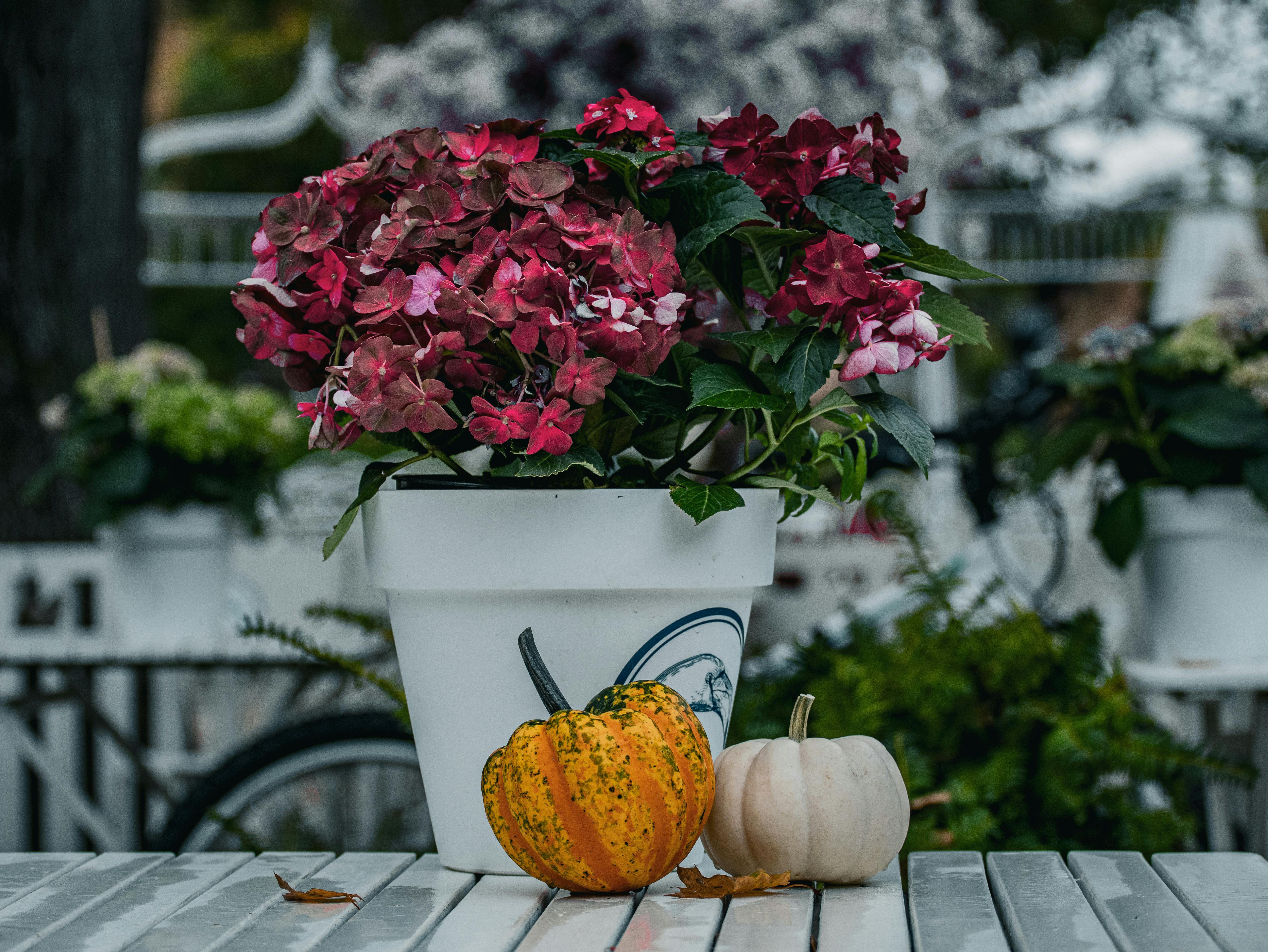Growing squash is a rewarding and fun gardening experience, and one of the key elements to successful squash production is selecting the correct pot size. The size of the pot you choose for your squash plant will depend on a number of factors, such as the variety of squash you are growing and your garden space. This article will provide helpful information on what size pot to use for your squash plant.The best size pot for a squash plant is approximately 20 inches in diameter and 8 to 10 inches in depth. This size pot provides enough room for the plant to establish a healthy root system and grow without becoming root-bound.
Advantages of Using a Large Pot for Squash Plant
The use of large pots for growing squash plants has several advantages. First, larger pots allow for increased root growth. This makes it easier for the plant to take up more nutrients and minerals from the soil, resulting in healthier plants. Additionally, larger pots provide more room for air circulation. This helps reduce the risk of fungal diseases and other issues that can affect squash plants.
Larger pots also help retain moisture in the soil better than smaller pots, which is important for proper plant growth. This means that you won’t have to water your plants as often, reducing your maintenance time and effort. Finally, large pots will give your squash plants more space to spread out their roots and foliage, allowing them to reach their full potential size and yield.
Overall, using a large pot for squash plant can be beneficial in many ways. Not only does it allow for increased root growth and better air circulation but it also helps retain moisture in the soil and gives the plants more space to grow. All these factors contribute to healthier plants with higher yields which make it worth investing in a large pot for your squash plants.
What Are the Disadvantages of Using a Small Pot for Squash Plant?
Using a small pot for growing squash plants can have some significant disadvantages. Firstly, it is difficult to maintain an adequate soil moisture level in a small pot. Squash plants require frequent watering in order to produce healthy fruits, and without proper watering, the fruits will not reach their full growth potential. Furthermore, if the soil is too wet, it can lead to root rot and other diseases. Secondly, squash plants require plenty of nutrients in order to thrive and they can quickly deplete the soil in a small pot. It is important to fertilize regularly in order to keep the plants healthy and productive. Thirdly, small pots do not provide enough space for roots to spread out and this can limit the plant’s ability to absorb water and nutrients efficiently. Finally, squash plants can become top-heavy due to their large fruits and this makes them susceptible to toppling over if grown in a small pot. It is important to provide adequate support for these types of vines so that they are able to remain upright during periods of heavy fruit production.
Overall, using a small pot for growing squash plants has some significant disadvantages that should be taken into consideration when deciding on which type of container is best suited for this particular crop.
Pot Size
When choosing the right size pot for your squash plant, the size of the pot is an important factor. The larger the pot, the more space is available for a larger squash plant to grow and develop. Also, larger pots mean more soil to hold moisture and provide better aeration for roots. A pot that is too small will not provide enough room for a squash plant to grow properly and will not hold enough soil or moisture for effective growth.
Soil Type
Another important factor to consider is the type of soil you use in your pot. Squash plants prefer loose, well-draining soil that has plenty of organic matter mixed in. The type of soil can also affect the amount of water needed for the plant as different soils can absorb or retain water differently.
Watering
Watering is an important part of maintaining healthy squash plants. When selecting a pot size, you should make sure that it has adequate drainage holes so that excess water can escape and not cause root rot or other problems. Also, make sure there is sufficient space between the top of the soil and the rim of the pot so that you can easily water without spilling over onto other plants or areas around your garden.
Location
The location where you plan to place your squash plant will also affect what size pot you should choose. If you plan to place your plant in a sunny spot, then a larger pot with more soil may be necessary to retain moisture and keep temperatures regulated within your garden area.
Overall, when choosing the right size pot for your squash plant, it’s important to consider factors such as size, soil type, watering needs, and location before making a final decision. The right combination of these factors will ensure that your squash plant receives all it needs to thrive and produce delicious fruits!
What Size Pot Is Optimal for Growing a Squash Plant?
When it comes to growing squash plants, the size of the pot is an important factor to consider. Squash plants can be grown in pots of all sizes, but larger pots can provide more space for the roots to spread out and allow for better drainage. For best results, it is recommended to use a pot that is at least 12 inches in diameter and 12 inches deep. This will provide enough space for the plant to grow and develop. Additionally, make sure that the pot has plenty of drainage holes so that excess water can easily escape, reducing the risk of root rot or other issues.
When choosing a potting mix, look for one that is formulated specifically for vegetables or fruits. The mix should contain compost or well-rotted manure as these provide additional nutrients to help your squash plant thrive. Make sure to keep the soil moist but not soggy as squash plants prefer moist soil conditions but too much water can cause root rot. Additionally, be sure to fertilize your plant regularly throughout the growing season in order to provide additional nutrients and encourage growth.
Finally, be sure to provide adequate sunlight when growing squash plants in pots. Squash plants need full sun in order to grow properly so make sure that they have at least 6 hours of direct sunlight each day. If you cannot provide this amount of light naturally then you may need to supplement with artificial lights in order to ensure your squash plants get enough light exposure.
With the right pot size and soil conditions, you can successfully grow squash plants in containers with ease. Be sure to provide ample sunlight and fertilization throughout the growing season for best results!

How Many Plants Can Fit in a Pot for Growing Squash?
When it comes to growing squash, it is important to consider the size of the pot you have available and how many plants you can fit in it. Generally speaking, you can fit two to three squash plants in an 8-10 inch pot. If you have a larger pot, such as a 10-12 inch pot, then you may be able to fit an additional plant or two.
The size of the squash plant will also determine how many plants can fit in the pot. Some varieties of squash are more compact and will take up less space than others. If you have a smaller variety of squash, such as a zucchini, then you may be able to squeeze in more plants into the same size pot.
Another factor that will determine how many squash plants can fit in your pot is the soil type and amount of water being used for irrigation. If your soil is too wet or too dry, it will affect how well your plants grow and take up space in the pot. Too much water can cause root rot and too little water can cause wilting.
Finally, if your goal is to maximize yield from your container garden, then spacing can play an important role. Squash plants need room to spread their foliage and reach full maturity before they start producing fruit. So if you are looking for maximum yields from your container garden, then giving each plant plenty of space is key.
In conclusion, the number of plants that will fit into a single pot for growing squash depends on several factors including: the size of the pot, type of squash being grown, soil type and watering habits practiced by the gardener. With careful consideration given to these factors, gardeners should be able to get an idea of how many squash plants they can comfortably fit into their chosen container size before planting begins.
What Type of Soil Is Best Suited for Growing Squash in Pots?
Growing squash in pots can be an effective and rewarding way to get a great harvest. However, it is important to ensure the right type of soil is used for the best results. The ideal soil for growing squash in pots should be well-draining, nutrient-rich, and have a slightly acidic pH of 6.5-7.0.
Organic compost or aged manure are both good choices to add to the soil mix when planting squash in pots. These materials will supply additional nutrients and organic matter to help promote strong root growth and healthy foliage. For even better drainage, perlite or sand can also be added to the soil mix, which will help keep excess moisture levels low and reduce the risk of root rot and other diseases.
It is also important to provide good air circulation in the potting soil by using a pot with several drainage holes at the bottom. This will allow air to reach the roots, which will help prevent any standing water from developing in the container. Additionally, regular watering is essential for keeping squash plants healthy; however, it is important not to overwater them as this can cause root rot or fungal diseases.
Overall, when choosing a soil mix for growing squash in pots it is important to select one that has good drainage qualities and provides plenty of nutrients for the plant’s roots. Organic compost or aged manure are ideal additions for providing extra nutrients while perlite or sand can help improve drainage and air circulation within the container. By selecting a quality soil mix with these components, gardeners can expect great results when growing squash in pots!

Conclusion
When selecting a pot for your squash plants, the most important factor to consider is the size of the pot. If it is too small, the plant will be unable to take full advantage of its environment and may not grow as well as it could. If it is too large, then there is a risk of over-watering and root rot. Therefore, it is important to choose a pot that is just the right size for your squash plants. A 10-inch diameter pot will be suitable for most varieties of squash plants, but if you have larger varieties, such as zucchini or pumpkins, then you may need a larger pot up to 15 inches in diameter.
In addition to size, you should also pay attention to material when selecting a pot for your squash plants; however, this is less important than size since many types of pots can provide good results. With a suitable pot and proper care, your squash plants should thrive and provide you with an enjoyable crop of delicious vegetables!

